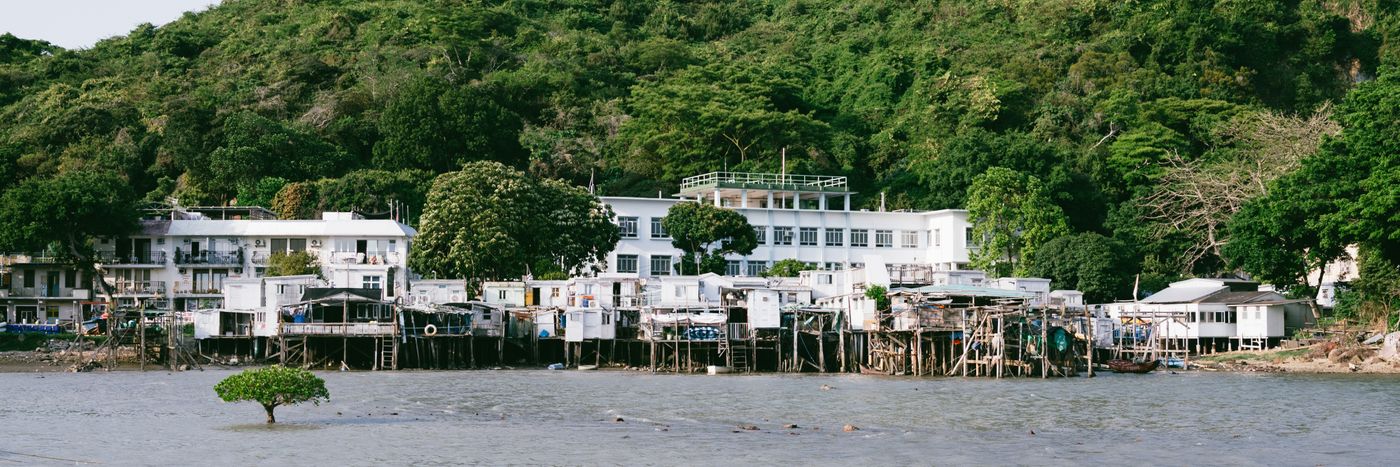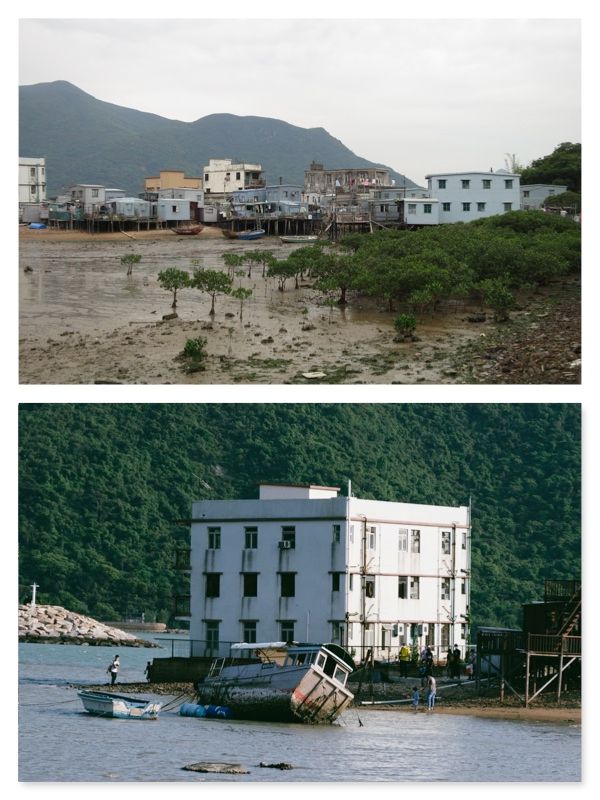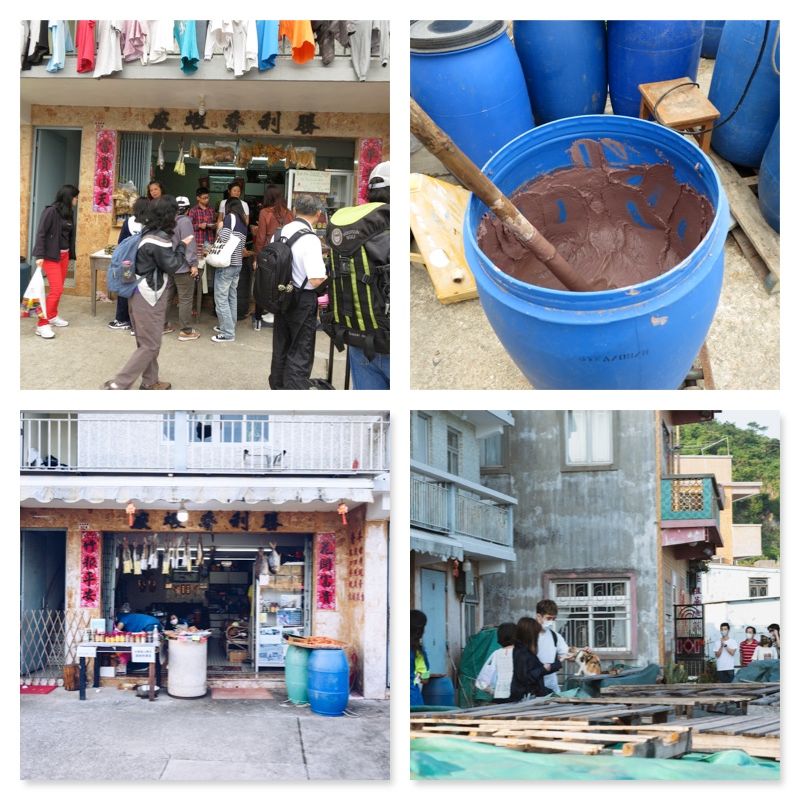
Sad but True
Walking/Tai O: Showing the enthusiasm and talent of Hong Kong people in queuing

"If it wasn't for him, I would have gone back immediately when I saw this person and dragon! My mother said that she would go out for a walk during the holidays, and don't stay at home all the time. Go to a remote place in the mountains, the company Sale has a customer in Tung Chung, I can't even push it off. If it wasn't for him..." A father who looked to be in his mid-thirties dragged his three- or four-year-old son with a beach shovel, complaining from the Ngong Ping 360 escalator to the 11th tour In front of the bus stop.
The mother who was unable to cultivate herself after giving birth to the child, and the daughter who was dragging the bucket with her, didn't respond at first. Half an hour later, the team moved to the covered bus stop. Seeing that it was about to get on the bus, the mother seemed to be persuaded. She shook off her daughter's hand and told the two cheerful children, "You are going by yourself, we are going home!"
The child obviously didn't understand, and waved to the two adults with a smile: "Bye bye, bye bye!"
The four came from two groups of households, with the other half apparently taking their own vacations and taking their children on outings alone. The same combination is common in Holiday Tai O, ten years ago and ten years later.
Every ten years

After Cheung Chau, a large-scale suburban tourist village in Hong Kong, Tai O is the largest. Before 2000, Tai O's tourism had not yet been formed, and it was probably in the exploratory stage. There were about some local tea, some restaurants and seafood shops. Handicrafts are not stationed, and guided tours of the sea are scattered.
おもsir from the photography class entered Tai O in the morning that year. After taking pictures, it was washed in the cafeteria and painted on the spot. Because he goes every week, the proprietress specially reserved a seat for him: "The photo was exhibited at the Tai O Art Museum (cultural studio), but it was removed from the shelves because it was too abstract!"
I visited the Tai O Cultural Studio ten years ago, but this time I didn't see the door open. The owner, who was very noisy and kept talking all day long, didn't know what was going on. If you think about it, it's been 10 years. It's a bit rare. Today, it is estimated that the cultural studio is one of the first non-governmental organizations to conduct local cultural and historical research.
The museum owner collects old artifacts and sets up exhibitions, interviews neighbors to write and publish books, draws 3D pictures of shacks, and reconstructs the culture of Tai O fishing village. If you can persist until now, you will probably become the target of being HK, Ming Zhou and others to follow up one after another!
I joined the publishing house for the first time 10 years ago. I bought a Canon S100 for Easter for 3,000 yuan and contributed for one year. Tai O is the first stop of the test. There are still a lot of photos on the old blogger, looking for the harddisk, only a few are left. Well, the amazing change in equipment can be seen from the quality of the photos.
queue party heaven

Although Tai O calls itself the Hong Kong version of Venice, it has the reputation of a water town. However, when I walked in, I felt like Jiufen - pushing the lock step by step, persuading me to buy it step by step.
At that time, the trend of handicrafts had just started, and many young people returned to Tai O on weekends to set up stalls and sell their own handmade accessories. Chat with tourists in front of the stall and exchange ideas.
In this revisit, the craftsman disappeared and became a queuing party paradise - everyone in Tai O showed incomparable enthusiasm and patience for queuing.
Arranging for an hour for the tourist bus to enter Tung Chung, Pai Shaweng, Pai charcoal egg waffles, Pai charcoal grilled fish spring...
I really hate queuing, so I chose a "self-sit" cafeteria. I wanted to go in and find a seat and buy something to eat. I didn't eat anything at three o'clock. The result is still a queue.
Only then did I discover that there were quite a few "party groups" in the cafeteria. One organized four people, one waited for Shawon, another cooked egg waffles, another searched for street snacks, and the last one took a seat in the cafeteria to look at the bags.
Is it really worth spending four hours waiting for these not-so-common snacks? Don't you want to see the scenery? No, thinking in reverse, it is precisely because there are so many people that queues are efficient. Waiting for one hour for each stall will take four hours for one person. It only takes one hour for four people to work separately.
Well, but many Hong Kong people just want to eat and drink as a group. What is the culture here, how is the landscape, how does it feel, is the next thing?
The legend of the mermaid in the water town

Tai O is located just at the estuary of South China, close to Tuen Mun, an important military location in the Ming and Qing dynasties. Generations of egg families have lived here by the water. Lu Ting, the first ancestor of the scorpion family, is closely related to Da O. It is said that Lu Ting is a murloc. Live on board and on land.
As the ancestor of the legend of the sea-seekers, Lu Ting is quite figurative. Looking around the world, wherever there are sea-seekers, there are similar legends circulating. Maybe the murlocs really existed.
In recent years, in order to establish national identity and national history, Hong Kong people get rid of the historical view of the Han cultural center, and Lu Ting is considered to be one of the origins of Hong Kong people.
Conjectures are not entirely absurd. The cluster of shack buildings is located in the coastal areas of Hong Kong, including Tai O and Sha Tau Kok. However, it is rare in Guangdong, at least I have not seen it. On the contrary, it is very similar in Southeast Asia. The houses near Angkor Wat, even the land dwellings, are very similar to the structure of the hut.
Some linguists even believe that Cantonese endings, nila, etc. are close to the Vietnamese language, even more so than the Central Plains Mandarin.
During the Ming and Qing dynasties, Tuen Mun was a military center. The Portuguese fought against the Ming army in the Tuen Mun Strait. And build a supply point in Tai O. Why it was not further developed here is unknown. There may be some distance from Quanzhou, or it may be affected by the long-term sea ban.
The British Hong Kong government actively developed Lantau from the late 1980s to the 1990s, but Tai O was not included in the development plan. Until the Hong Kong-Zhuhai-Macao Bridge opened to traffic in recent years, Tai O has become one of the entrances and exits connecting the main roads of the Pearl River Delta, which seems to have a little development intention.
Shrimp paste by the seawall

Whenever a Hong Kong film and television production hopes to give the protagonists a slightly different background, they are arranged to "come from the outlying islands". It is a pity that the stories often only use the outlying islands as the setting, and fail to outline the life atmosphere of the outlying islands.
Tai O residents are very accustomed to tourists visiting, unlike Peng Chau where the slogan "Photography is prohibited in residential buildings" is erected everywhere. No-entry warnings are still in place, but they are comfortable continuing their vacations or routines.
On the day of the revisit, two siblings played billiards and waited for a while. The younger sister suddenly threw her arms and slammed a ball into the mangroves with a parabola of throwing the bait. The father, who was still strong in age, scolded in front of the tourists: "I told you to aim carefully and teach you not to listen to me. you."
I don't know if the season has passed, or if it is not created. Ten years ago, I smelled the fragrance of shrimp paste from far away by the sea. This year, even the sea breeze is not salty. Seafood and shrimp paste have also changed to charcoal-grilled dried seafood... Actually, there is no taste.
Murals and street calligraphy have added a lot. It is a pity that there are too many tourists, and everyone is in front of the works. If you want to carefully read the text on the gate and the paintings on the wall, it is easy to be misunderstood 𥄫嘢.
Suddenly, I felt that selling snacks was a wise move. The village museums, boutique hotels, and craftsmanship experience were not enough. If I didn’t queue up to eat, I would have a hard time. This is the way out for the fishing village to explore on its own over the past decade.
Tiger Mountain Sunset
The goal of this trip is Hushan sunset. After that year, I became addicted to photography, and the sunset scene must be chased. I missed it, it's hard to understand. But it seems that there is no strong motivation to go this way.
Hutoushan is right next to the Shaolin branch that has never seen students practice. It takes about ten minutes to go up the mountain easily. The mountain road is paved, and there is a Chinese white sea glue dolphin statue at the starting point. It is definitely because the official knows how much the Hong Kong-Zhuhai-Macao Bridge, the airport three-run, etc. projects have had an ecological impact on the Chinese white dolphins, so this image was erected to commemorate people's great achievements.
The scenery is good, you can see the plane passing by at a low altitude, and the artificial island floating and sinking in the sea. The mountain road is built along the ridge, and one is a vast cemetery, surrounded by mountains and sea, good feng shui.
At the other end, the sunset at the heritage hotel wharf is still beautiful. It seems that the only thing that has not changed is here, just like the memory. People who fish, people who approach fishing, people who punch in, men and women who help women punch in... Well, the pier can only do these things, and I feel that it is too promiscuous for ten years.
The way back was a lot of twists and turns. Ten years ago, I was very impressed and took a boat to Tuen Mun. It was very convenient to live in Yuen Long at that time. When I arrived, I bought the ferry ticket and got on the boat on time, without having to force the bus.
No ship this time! There are no staff in the shipping company's Genting Pavilion, and it is announced that the Octopus will be on board. Who knows when another staff member will dispatch the chips, and ignore it: "There is no boat! Don't wait."
Welcome to subscribe to [patreon in place] to read more and click to subscribe: https://www.patreon.com/posts/65241465
===============================
A weekly city story.
Break through the peer-to-peer life mode;
Take a step and draw a comfortable plane.
🇫acebook| https://www.facebook.com/meetnwalk/
📷Instagram| https://www.instagram.com/meet.walk/
🅿atreon| https://www.patreon.com/meetnalk
🌐| https://meetnwalk.wordpress.com/
Others| https://linktr.ee/housescheung
Like my work?
Don't forget to support or like, so I know you are with me..
Comment…